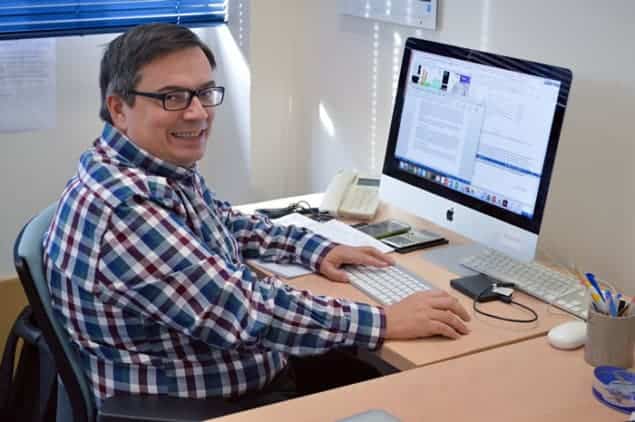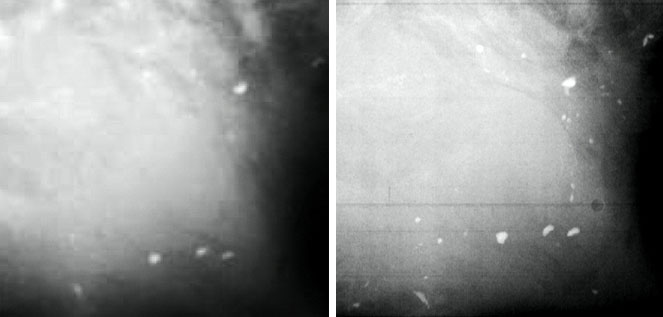Flash Physics is our daily pick of the latest need-to-know developments from the global physics community selected by Physics World‘s team of editors and reporters

Xavier Barcons will lead European Southern Observatory
The Spanish astronomer Xavier Barcons will take over as director general (DG) of the European Southern Observatory (ESO) in September 2017, replacing the current DG Tim de Zeeuw who completes his mandate. Barcons is a professor at the Spanish Council for Scientific Research in Madrid and is an expert in the field of X-ray astronomy. He served as ESO council president in 2012–2014 and is currently chair of the organization’s Observing Programmes Committee. Based in Garching, Germany, the ESO has three observing sites in Chile. “I look forward to seeing the European Extremely Large Telescope (E-ELT) come to fruition and overseeing the further development of the Very Large Telescope, Atacama Large Millimeter/submillimeter Array (ALMA) and many other projects at ESO,” said Barcons.
Fountain gives physicists time to study molecules
A molecular fountain has been created that allows molecules to be observed for very long times as they free fall. Created by Hendrick Bethlem and colleagues at Vrije University in the Netherlands, the technique involves cooling ammonia molecules to milliKelvin temperatures and then launching them upwards at about 1.6 m/s. The molecules can then be studied in free fall for as long as 266 ms. This set-up is similar to atomic fountains, which allow very precise measurements to be made of atomic energy levels and form the basis for atomic clocks. A molecular fountain has proven much more difficult to create because molecules can vibrate and rotate – and this makes it very difficult to cool and manipulate them using conventional laser techniques. Bethlem and colleagues overcame this problem by using electric field gradients to exert forces on ammonia, which is a polar molecule. The team says that its new molecular fountain could be used to look for tiny deviations from the Standard Model of particle physics – which could be revealed by tiny shifts in molecular energy levels. Tests of the equivalence principle of Einstein’s general theory of relativity could also be done by measuring the acceleration due to gravity experienced by different types of molecule. The fountain is described in Physical Review Letters.
X-ray imaging technique could improve cancer treatment

An X-ray imaging technique that could only be done at large synchrotron facilities has been adapted for widespread use by Sandro Olivo at University College London and colleagues. Called X-ray phase-contrast imaging (XPCI), the method involves measuring changes in the phase of an X-ray beam as it travels through a sample. This is unlike conventional X-ray imaging, which measures the attenuation of the X-ray beam. The technique is better able to distinguish structures in living tissue, making it ideal for medical imaging. XPCI is also better at finding tiny cracks and defects in materials and could also be used to detect the presence of weapons and explosives in baggage. However, XPCI could only be done using the laser-like X-ray beams produced by synchrotrons – which are huge electron accelerators. Now, Olivo and colleagues have developed a technique that allows XPCI to be performed using X-rays generated by conventional medical sources. It involves first passing the X-rays through a “mask” containing an array of apertures to create a number of beams. These then interact with the sample before passing through a second mask to a detector. This configuration converts differences in phase to differences in measured intensity. “We’ve now advanced this embryonic technology to make it viable for day-to-day use in medicine, security applications, industrial production lines, materials science, non-destructive testing, the archaeology and heritage sector, and a whole range of other fields,” says Olivo. The technology has already been licensed to Nikon Metrology UK for use in a security scanner and UCL and Nikon are currently developing a medical scanner.
- You can find all our daily Flash Physics posts in the website’s news section, as well as on Twitter and Facebook using #FlashPhysics. Tune in to physicsworld.com later today for the announcement of the Physics World Book of the Year for 2016 .



